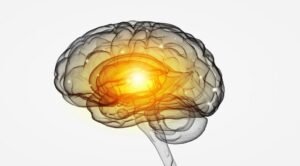300.02 Generalized Anxiety Disorder (F 41.1): An Overview
The diagnosis of generalized anxiety disorder has been part of the DSM diagnostic system since the DSM-3. It is believed to be one of the most commonly experienced anxiety disorders in the United States with approximately 2.9% of adults experiencing this condition. The key feature of generalized anxiety disorder is an excessive worry or anxiety about various events and circumstances significantly out of proportion to the actual threat involved.
One of the things that differentiates generalized anxiety disorder from other anxiety disorders is the fact that it seems to take place over a variety of circumstances and situations for more days than not over a minimum of six months. An individual experiencing this disorder finds it hard to control the anxiety and worry and includes at least three characteristic symptoms. The symptoms include sleep disturbance, restlessness or feeling on edge, difficulty concentrating or the mind going blank, easily fatigued, muscle tension, and irritability.
Special Concerns:
The key feature is a pathological sense of worry and anxiety and is easily distinguished from nonclinical levels of anxiety by the high level or intensity of the anxiety, as well as the level of impairment in an individual’s daily functioning. Somatic and physical symptoms often accompany generalized anxiety disorder and include diarrhea, nausea, sweating, dizziness, accelerated heart rate, and muscle tension. As with many anxiety disorders, women seem to be affected more often by generalized anxiety disorder than men and seem to receive this diagnosis more frequently.
In the United States, generalized anxiety disorder seems to be more often experienced by Caucasian and Native American populations and seems to be more often among younger individuals. Latinos, Asians, African-Americans and Caribbean black populations have lower levels of generalized anxiety disorder.
Generalized Anxiety Disorder Coding:
There is only one code for generalized anxiety disorder 300. 02 (F 41.1) in the DSM-5. There are no specifiers for this disorder although mental health clinicians can choose to use the with panic attacks specifier when necessary.
General information on generalized anxiety disorder as well as medication and treatment can be found on the following pages and specific criteria follow below.
Generalized Anxiety Disorder diagnostic criteria 300.02 (F41.1):
A. Excessive anxiety and worry (apprehensive expectation), occurring more days than not for at least six months, about a number of events or activities (such as work or school performance).
B. The individual finds it difficult to control the worry.
C. Anxiety and worry are associated with three (or more) of the following six symptoms (with at least some symptoms having been present for more days than not for the past six months):
Note: Only one item is required in children.
1. Restlessness or feeling keyed up or on edge.
2. Being easily fatigued.
3. Difficulty concentrating or mind going blank.
4. Irritability.
5. Muscle tension.
6. Sleep disturbance (difficulty falling or staying asleep, or restless, unsatisfying sleep).
D. The anxiety, worry, or physical symptoms cause clinically significant distress or impairment in social, occupational, or other important areas of functioning.
E. The disturbance is not attributable to the physiological effects of a substance (e.g. a drug of abuse, a medication) or another medical condition (e.g. hyperthyroidism).
F. The disturbance is not better explained by another mental disorder (e.g. anxiety or worry about having panic attacks and panic disorder, negative evaluation social anxiety disorder [ social phobia], contamination or other obsessions and obsessive-compulsive disorder, separation from attachment figures in separation anxiety disorder, reminders of traumatic events in posttraumatic stress disorder, gaining weight in anorexia nervosa, physical complaints in somatic symptom disorder, perceived appearance flaws in body dysmorphic disorder, having a serious illness in illness anxiety disorder, or the content of delusional beliefs in schizophrenia or delusional disorder).
Diagnostic Information and Criterion for Anxiety Disorders adapted from the Diagnostic and Statistical Manual of Mental Disorders Fifth Edition American Psychological Association by Paul Susic Ph.D. Licensed Psychologist




